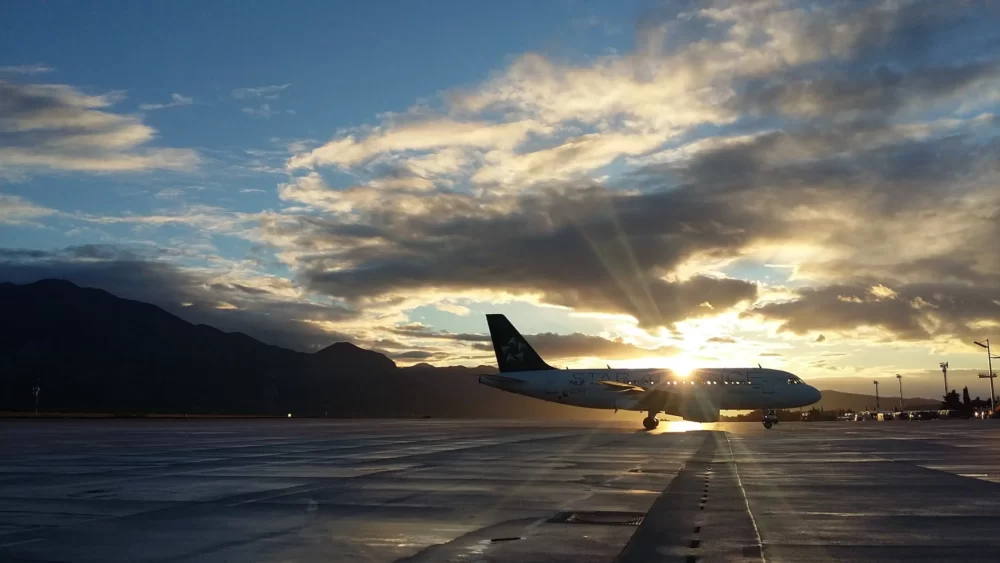Lifestyle
5 Things That Must Be Done Before An Aircraft Takes Off

Air travel has revolutionized how we explore the world, making it possible for people to reach far-flung destinations in hours. But behind the convenience and speed lies a complex and rigorous process that ensures passenger safety and smooth operations. Before an airplane takes off, crews must complete five crucial tasks to ensure a safe and successful flight. From pre-flight inspections to communication with air traffic control, each step guarantees a seamless journey for passengers and crew alike.
Table of Contents
Pre-Flight Inspections
Before any flight, crews must complete rigorous pre-flight inspections to verify the aircraft’s airworthiness. Highly-trained mechanics meticulously inspect the exterior and interior of the airplane, checking for any signs of damage or malfunction. They must scrutinize the aircraft’s engines, control surfaces, landing gear, and crucial systems. Technicians also review maintenance logs to ensure workers have completed necessary repairs and servicing tasks. This essential step minimizes the risk of technical issues during flight, providing passengers with peace of mind and maintaining the airline’s commitment to safety.
One critical part of this is to use Avionics flight line test sets to determine if electronic systems and devices installed in the aircraft, such as communication systems, navigation equipment, weather radars, and flight control systems, are operating correctly. These systems are pivotal in ensuring the aircraft’s safety, efficiency, and performance. Workers check for faults, anomalies, or discrepancies that might compromise the aircraft’s ability to navigate, communicate or handle emergencies. The avionics flight line test also includes checking the accuracy of critical instruments, such as altimeters and airspeed indicators, to ensure precise readings during the flight.
Fueling And Weight Distribution
Proper fueling and weight distribution are paramount to a safe flight. Fueling teams calculate the required amount of fuel based on the flight’s distance, weather conditions, and any potential diversions. They also consider passenger and cargo weight, distributing the load evenly throughout the aircraft to maintain its center of gravity within safe limits. An accurate fuel load and balanced weight distribution contribute to stable flight characteristics, efficient fuel consumption, and reduced strain on the aircraft’s structure.
Flight Plan And Weather Briefing
Flight planning involves meticulously analyzing the intended route, altitude, and airways. Pilots work closely with dispatchers to create an optimized flight plan, considering weather, airspace restrictions, and fuel efficiency. Before departure, pilots receive a comprehensive weather briefing detailing current and forecasted conditions along the flight path, enabling them to make informed decisions about altitude adjustments or deviations to avoid turbulent weather and ensure a smoother journey for passengers.
Passenger Briefing And Safety Checks
Ensuring the safety of passengers is a primary concern before takeoff. Flight attendants conduct safety checks to ensure that all emergency equipment, such as life jackets and oxygen masks, is in proper working order. Before the airplane leaves the gate, flight attendants also provide a comprehensive safety briefing to inform passengers about essential safety procedures, including seatbelt usage, emergency exits, and how to use safety equipment. The briefing prepares passengers for any unforeseen circumstances and reinforces the airline’s commitment to passenger well-being.
Communication With Air Traffic Control
Coordination with air traffic control is vital to maintain order and safety in the skies. Pilots communicate with air traffic controllers before takeoff to receive their assigned route and initial altitude. Controllers ensure that the airspace is clear and that the aircraft can safely merge into the flow of air traffic. During takeoff, the pilots follow precise instructions from air traffic control to ensure a smooth departure and avoid potential conflicts with other aircraft. This constant communication with air traffic control continues throughout the flight, ensuring the airplane’s progress goes smoothly.
Conclusion
The pre-flight preparations before an airplane takes off are crucial for the safety and efficiency of the flight and a testament to the aviation industry’s dedication to delivering an unparalleled travel experience. From thorough inspections to meticulous planning and communication, each step is integral to ensuring a smooth and secure journey for all passengers and crew. By adhering to these five essential tasks, airlines maintain an exceptional safety record and continue to earn the trust and confidence of travelers worldwide. So the next time you embark on a journey, take a moment to appreciate the meticulous efforts behind the scenes that enable you to soar through the skies with peace of mind.
Also, Read – How Often Does Aircraft Oxygen Need to be Replaced?

-

 Business3 years ago
Business3 years agoHow to Do Long-Distance Moves with Children
-

 Business2 years ago
Business2 years agoThe Ultimate Guide To Thriving In Your Printing Franchise
-

 Business2 years ago
Business2 years agoExploring The Benefits And Challenges Of Restaurant Franchising
-

 Business4 years ago
Business4 years agoIs Guest Posting a Good Inbound Marketing Strategy?
-

 Travel2 years ago
Travel2 years agoQuick Guide: Moving To Santa Rosa?
-

 Tech3 years ago
Tech3 years agoCyber Table That Will Change Your Life
-

 Lifestyle2 years ago
Lifestyle2 years agoDallas’ Hidden Gems: 6 Must-Try Restaurants Off The Beaten Path!
-

 Lifestyle2 years ago
Lifestyle2 years agoTop 10 Restaurant Franchises In The US











Recent Comments